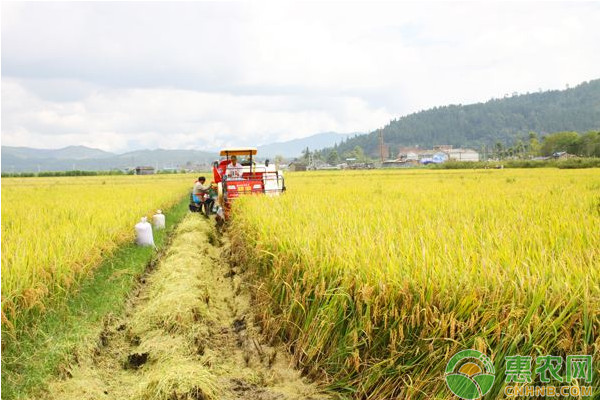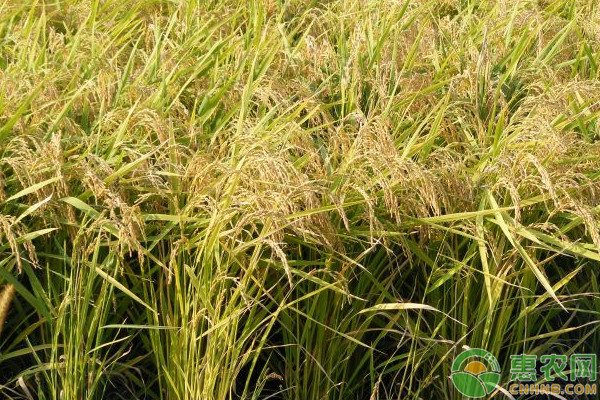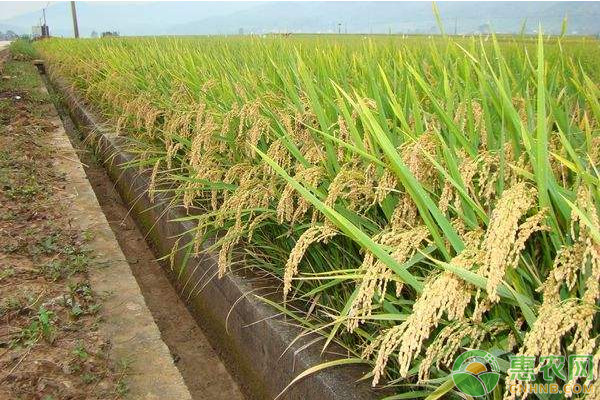High-quality improved varieties of rice in the mountainous area and field management techniques
How to grow rice in mountainous areas? Most of the conditions in mountainous areas are sufficient rainfall and wide distribution of paddy fields. The rice breeding methods in mountainous areas are all raised early, so do not choose direct seeding. The mountainous fields are irregular and the traffic is inconvenient, which is not conducive to mechanized production. When the seedlings are transplanted, they are artificially planted and thrown. Two experts are talking about the cultivation and management of mountain rice. 1 High quality improved varieties of rice in mountainous areas The selection of improved varieties of rice in mountainous areas is very strict. The selection of good varieties of rice at different altitudes directly affects the yield of rice. If the varieties in high-altitude areas are not properly selected, the grain will not be harvested. Therefore, it is very important to plant rice varieties in mountainous areas. For the field with high light intensity and low mountain level below 400 meters, you can choose the combination of hybrids with a full-breeding period of about 140 days. For the planting of 400-550 meters above sea level, you should choose a hybrid combination with a total breeding period of 125-130 days. At altitudes above 550 m above sea level, a combination of hybrids with a main breeding period of no more than 120 days may be used. 2 breeding and transplanting The temperature in the mountainous area is low in spring, and the temperature difference between day and night is relatively large. When the temperature is stable above 12 °C, start the seedlings, usually in mid-April, and start transplanting on average above 15 °C. 2.1 Early breeding In the early breeding of seedling beds, dry land or vegetable land with good soil fertility should be selected. Before the next planting, the breeding ground will be fined, and at the same time, pesticides will be placed to prevent underground pests, and the whole box will be applied after rice compound fertilizer or household fertilizer. The box width is 1-1.2 meters and the length is 6-8 meters. 2.2 sowing The planting in the mountainous area was around April 20, and the high-altitude sowing period was postponed for 2-3 days. The amount of sowing depends on the cultivated paddy field. In the mountainous area, the amount of seed in the 1 mu of paddy field is 1 - 1.5 kg, and the seedbed 10-12 square can ensure the seedling of 1 mu of paddy field. The seed soaking is generally 24 hours, and the seedbed is poured before the sowing. Seeds are seeded with “early nursery mothersâ€. After being planted, the seeds are covered with fine soil, and the seeds are not exposed, and then watered. Insert a bamboo bow 50-60 cm, cover the membrane and press it around. After the emergence, the membrane will be opened and ventilated, and the night cover will be exposed to prevent high temperature burning. When the seedlings are in 2 leaves and 1 heart, attention should be paid to the prevention and control of the seedlings, and a little bit of topdressing should be done in time to ensure that the seedlings are strong and the roots are developed. After 3-4 leaves, open the membrane around, 昼 夜 夜 夜 夜 夜 夜 夜 夜 夜 夜 夜 夜 夜 夜 夜 夜 夜 夜 夜 夜 夜 夜 夜 夜 夜 夜 夜 夜 夜 夜 夜 夜 夜 夜 夜 夜 夜 夜 夜 夜 夜 夜 夜 夜3 to 5 days before the removal of the membrane to refine the seedlings, so that the seedlings, after transplanting, adapt to the field temperature, to ensure the normal growth of the seedling transplanting field. 2.3 Daejeon transplanting The transplanting of mountainous fields is divided into two types: throwing and planting. In the field of artificial irrigation, it is possible to use throwing, and the natural paddy field is artificially planted. The average temperature in the mountainous area is stable above 15 °C, and the transplanting age can be transplanted in 15-20 days. The transplanting age should not be too long. The long age of the transplanting is not conducive to field transplanting and new root growth. For transplanting, a wide row of narrow plants can be used, with a row spacing of 12×23 cm and 10×28 cm, and a planting of 1.8-2 million plants is suitable. 2.4 ridge There are many cold-dipped fields in the alpine regions, and the rice yields in the heavier fields are extremely low. In order to obtain high yields of rice planted in the alpine mountainous area, only the cold soaking field transformation can improve the water temperature between the fields to ensure the normal growth and maturity of the rice. In the cold-cold field in the alpine region, ridges can be used for ridgework, and ridges can save investment. Doing a ridge can keep growing rice for 4-5 years. The ridge is east-west, generally 20-22 cm deep, 20-25 cm wide, ridge low 30 cm wide, and the ridge surface is 20-25 cm. After the ridge is completed, the ridge surface will be applied to the base fertilizer one day before planting, and the two rows of seedlings will be planted on the ridge and the mulch. The field weeding can be carried out by artificial and herbicide. In the second year, the ridge and slopage soil will be reintroduced into the ridge before planting. Face, leveling can be planted. 3 Rice field management technology 3.1 scientific topdressing Implement the principle of heavy, medium and light, after-fill, eat less and eat more, and see the fertilization of seedlings. Due to the large number of red buds in the mountainous areas, the nitrogen-fixing algae, thunder and rain, can add a certain amount of nitrogen fertilizer to the soil; the phosphorus and potassium are issued unevenly, the content in the soil is extremely low, and the change is large, and the effective zinc decomposition is slow. Can not meet the normal growth needs of rice, only to make a reasonable supplement, mountain rice topdressing are seeing seedling fertilization. On the day before planting, the fertilizer was applied to the fertilizer and accounted for about 50% of the total amount of fertilizer in the paddy field. The fertilization of the paddy field in the mountainous area was mainly phosphorus and potassium fertilizer, and 1 to 1.5 kg of zinc fertilizer was added per mu. 10 days after planting, phosphorus and potassium-based mixed fertilizers were applied. The amount of mu was 10-15 kg, 0.5 kg of zinc fertilizer was added, and 0.5-1 kg of cold soaked water was added to supplement. After the tillering, the panicle fertilizer should be applied 25-30 days before the earing, and the amount of phosphorus and potassium fertilizer should be 5-10 kg per acre. 2.5 kg of potassium dihydrogen phosphate plus a small amount of nitrogen fertilizer was sprayed. 3.2 Implementing scientific water management With the popularization of agricultural technology in mountainous areas, rice cultivation in the mountainous areas is dryland breeding, the roots of Miaozhuang are developed, and the low tillering rate is high. After transplanting the seedlings, the seedlings are transplanted with shallow water and dry water to promote rice tillering. When the basic seedlings of acre reach 18-20 million plants, the fields should be grilled, the clay should be re-baked, and the soil surface should be shallowly cracked; the sandy soil should be lightly roasted, and the soil surface can be whitened to ensure no water shortage during booting. Moisture is appropriate. It is not advisable to break the water too early before harvesting. It is necessary to promote the leaves with roots, promote the ears with leaves, and increase the grain with the ears to stabilize the harvest. 3.3 timely cultivating weeding Ten days after planting, the weeds began to sprout, and herbicides and herbicides were used for weeding. The herbicide is applied 5-7 days after planting, the water is kept at an inch depth, and the water is kept for 48 hours; the artificial soil loosening is beneficial to the root development, and the soil ventilation and air permeability are changed. The artificial removal is usually carried out 10-15 days after planting. It is advisable to carry out once in the middle and late stages of rice tillering. 3.4 Pest Control The main pests of rice in mountainous areas are rice aphids, water screws, rice leaf roller and rice planthoppers; the disease is mainly rice rice disease and stalk disease. Rice pest control is mainly based on prevention and comprehensive prevention and control. In order to ensure the safety of humans and animals, effective cultivation of microorganisms, protection of natural enemies, farmers to eat safe and assured food, mainly promote organic pesticides, combined with biological control, to ensure the organic production of rice crops. In short, rice production in mountainous areas, first of all, rice planting in mountainous areas must first choose the right altitude planting, hybrid rice variety combination, using new technology breeding and field management technology; secondly, timely control of pests and diseases, in order to ensure the goal of increasing production and income. Second, with the development of modern agriculture, the professional technicians in the first line of agricultural technology promotion in mountainous areas should conscientiously study modern high-quality agricultural technology, deepen technical practice, improve technical service level, correctly guide mountain farmers to carry out scientific cultivation, and optimize and upgrade mountainous agriculture. The increase in agricultural production and income provides effective technical support. For more exciting pictures and popular comments on rice cultivation in mountainous areas, click below to view the original ↓ ↓ ↓ Hair Wash Shampoo,Natural Shampoo,Hair Nourishing Shampoo,Ginger Hair Shampoo Wuxi Keni Daily Cosmetics Co.,Ltd , https://www.kenidailycosmetics.com

